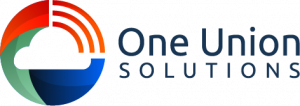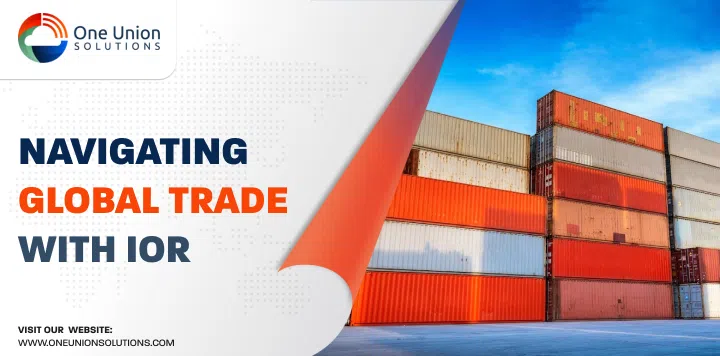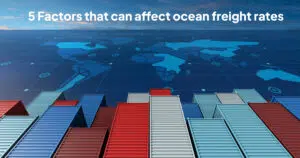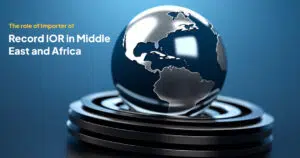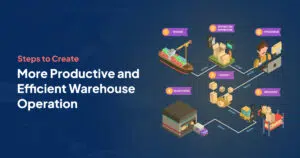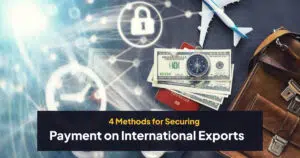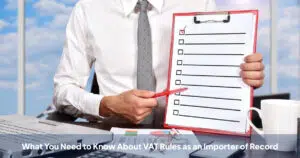Businesses that import IT and telecom equipment enter a world where advanced technology and strict international trade laws collide. The challenge involves not only seizing chances for expansion and creativity but also negotiating a maze of legal and practical difficulties. Comprehending regulatory frameworks, customs procedures, and strategic logistics becomes critical as businesses expand into foreign markets. Gaining control over these factors is essential for avoiding the typical pitfalls connected with global trade, making well-informed decisions, and streamlining the supply chain to enable successful market entries.
Complete Overview of IOR Services
What Importer of Record (IOR) Services Are All About
The cornerstone for businesses attempting to negotiate the intricate regulatory landscapes of global markets is an Importer of Record. The IOR is not only a helper but also a vital tool for guaranteeing adherence to numerous local rules and regulations when importing telecom and IT equipment. This compliance includes making sure that all imported goods follow the nation of origin’s unique environmental, electrical safety, and telecommunications regulations. The duties and responsibilities of the IOR also include making sure all import-related paperwork is correctly filled out and filed, as well as supervising the timely payment of duties and taxes. This function is essential to reducing the risks of non-compliance, including fines, delays, and possible goods confiscation.
Benefits of Using IOR Services
Handling Compliance: Global trade is a complex landscape with many regulatory obstacles. Each country’s unique regulations for telecom and IT equipment can be a maze of safety standards, labeling requirements, and certifications. IOR services are skilled in handling these nuances, making sure your shipments comply completely and protecting you from the consequences of non-compliance.
Cost-Effectiveness via Specialization: Delays, fines, and shipment rerouting brought on by compliance problems can have enormous economic effects. IOR services reduce these risks by using their knowledge to bargain for more affordable shipping, effectively handle the process of clearing customs, and steer clear of possible financial pitfalls.
Simplifying Procedures for Importation: Importing IT and telecom equipment can come with an enormous bureaucratic burden due to the abundance of paperwork required, including packing lists, certificates of compliance, and commercial invoices. IOR services simplify this process by taking care of the complex documentation and procedural requirements on your company’s behalf. This relieves the burden of logistical complexities and lets your business concentrate on its core competencies.
Choosing the Correct IOR Service Provider
Level of Experience and Expertise: Choosing an IOR service provider ought to be a calculated move. Providers who are well-versed in the importation of telecom and IT equipment as well as the particular laws and legal requirements that apply in your target market are extremely valuable. Their knowledge guarantees prompt customs clearance and compliance, reducing any possible delays.
Global Presence and Network: Having a wide-ranging global network gives a provider a big edge. This presence guarantees effective import management across various jurisdictions, offering a smooth global experience in logistics and compliance management.
Relationships with Customs Authorities: The seamless and quick clearance of goods can be considerably facilitated by a provider’s existing relationships with local customs authorities. These connections are crucial for negotiating the intricacies of customs laws and regulations and guaranteeing a more seamless importation process.
Technological Capabilities: Choosing a supplier with cutting-edge technology for shipment tracking and paperwork management is essential at a time when technology drives efficiency and transparency. This technological advantage is essential to lowering mistakes, cutting down on delays, and improving the import process’s overall effectiveness.
Improved Regulation and Compliance Navigation
Comprehensive Regulations for Telecommunications Equipment
Telecommunication equipment is subject to strict national and international regulations that are designed to maintain safety, interoperability, and effective use of the spectrum. The FCC’s regulations in the United States are not limited to general guidelines; they also include specific technical standards, such as for radio frequency devices, which specify exact emission limits and testing protocols. Getting the CE mark in the EU entails a rigorous conformity assessment procedure that, for some types of equipment, frequently calls for interaction with Notified Bodies. All parties must adhere to these standards, as failure to do so may result in market access being denied, product recalls, or hefty fines.
Strict Environmental Guidelines
Strict regulations have resulted from the effects of electronic products on the environment. Lead (0.1%) and mercury (0.1%) are two examples of the ten dangerous substances that are currently restricted by the EU’s RoHS directive. However, with targets aiming for an 85% collection rate, the WEEE directive places obligations on producers for the collection, recycling, and recovery of electronic waste. Manufacturers and importers need to carefully follow these guidelines because failure to do so may result in the withdrawal of products and financial penalties.
Managing Customs Clearance and Logistics in Further Detail
Logistics and Shipping Strategies
Sound strategic decisions that take time, money, and compliance with regulations into account are the foundation of efficient logistics. For example, the bottom line may be greatly impacted by selecting Incoterms (International Commercial Terms) that correspond with your company’s risk and cost appetite (e.g., DDP vs. FOB). Utilizing data analytics for route optimization is another aspect of advanced logistics planning that may save up to 25% on freight costs.
Comprehensive Customs Clearance Procedure
When importing IT and telecom equipment, the customs clearance process is a crucial step that requires not only the submission of paperwork but also a thorough understanding of tariff codes, valuation techniques, and trade agreement implementation. Duty rates can be impacted by accurate classification under the Harmonized System (HS) codes, and inaccuracies may result in customs audits or penalties. Here, competent management guarantees not only compliance but also the minimization of tax and duty obligations.
Meticulous Record-Keeping and Documentation
Beyond simple packing lists and invoices, importers of IT and telecom equipment must also provide comprehensive technical documentation for regulatory compliance, such as test results, conformity declarations, and thorough product descriptions. In addition to ensuring compliance, accurate record-keeping—mandated for up to five years in many jurisdictions—also helps with future audits and serves as a buffer against legal or regulatory challenges.
In-Dependent Strategic Planning for Worldwide Implementation
Thorough Market Research
Market analysis for IT and telecom equipment includes competitive landscape analysis, regulatory compliance costs, and IP protection environments in addition to standard demand assessments. For example, such an analysis could show that entering a given market could result in a 15% increase in overall compliance costs, which would impact strategic choices about product modifications or market prioritization.
Development of an Advanced Compliance Strategy
In the IT and telecom industry, creating a compliance strategy entails taking a detailed approach to product lifecycle management and regulatory tracking, possibly utilizing regulatory intelligence platforms that offer real-time updates on changes across jurisdictions. By taking a proactive approach, companies can avoid market access delays and maintain compliance throughout product life cycles by streamlining the process for updates and iterations.
Proficient Compliance Administration
Updates and Surveillance for Regulations
Updates to regulations can have a significant and immediate impact on the rapidly changing technology industry. For example, the implementation of new spectrum allotments for wireless devices may suddenly make current products non-compliant. Strategic product development and compliance alignment are made possible by the predictive regulatory trends that advanced monitoring tools and services—possibly with the help of AI algorithms—can identify and notify businesses about.
Certification and Recertification of Products
Standards for IT and telecom product certification are constantly changing to stay up with the latest developments in technology. Strategic planning for recertification during the design stage is a crucial part of efficient process management, which could result in hundreds of thousands of dollars in re-engineering savings. Software-defined radio (SDR) technologies and modular certifications can provide flexibility by minimizing the need for physical recertification in response to small changes.
Improving Data Security and Technology
Regulations Concerning Data Security and Privacy
Understanding the ins and outs of laws such as the CCPA and GDPR is essential for navigating data privacy and security regulations. This could entail applying data minimization principles during the design phase of IT equipment, which could result in up to a 20% reduction in compliance costs. In addition to facilitating cross-border data flows, advanced data governance frameworks can guarantee compliance with a variety of strict international regulations.
Cybersecurity Precautions
Importing IT and telecom equipment with cybersecurity safeguards in place not only safeguards private data but also prevents supply chain intrusions. This entails carrying out vulnerability assessments and implementing secure-by-design principles, which can considerably lower the risk of expensive breaches and improve the marketability of the product—despite possibly raising initial costs by 10% to 15%.
Risk management and supply chain optimization
Supply Chain Optimization and Inventory Management
Predictive analytics is a key component of advanced inventory management strategies, which enable just-in-time inventory levels and up to a 30% reduction in holding costs while maintaining product availability. Through integrated supply chain systems, coordination with partners and vendors can improve efficiency, lead times can be shortened, and real-time visibility can be obtained.
Entire Risk Control and Quality Assurance
In order to prioritize mitigation efforts, risk management in the importation process entails not only identifying potential logistical and regulatory risks but also quantifying them. Establishing a quality management system (QMS) that conforms to international standards such as ISO 9001 can improve operational efficiency and product quality while lowering the risk of non-compliance and raising customer satisfaction.
In summary
The importation of telecom and IT equipment into international markets is a complex issue requiring a deep comprehension of logistical, strategic, and regulatory factors. Businesses can effectively navigate these complexities, ensuring compliance, optimizing operations, and securing a competitive edge in the global marketplace by taking a proactive, detailed approach to every aspect of the process and utilizing the expertise of specialized IOR service providers.
